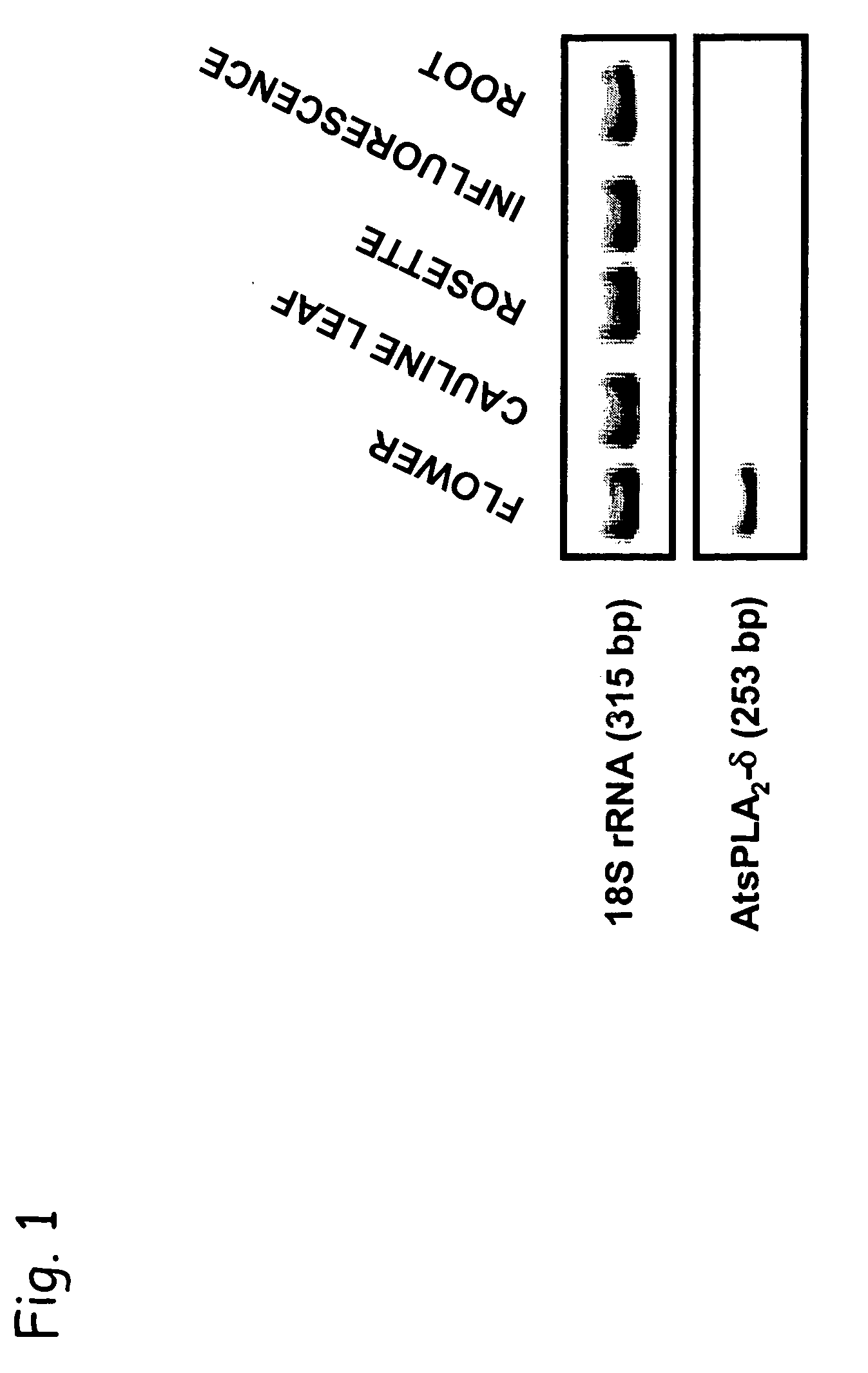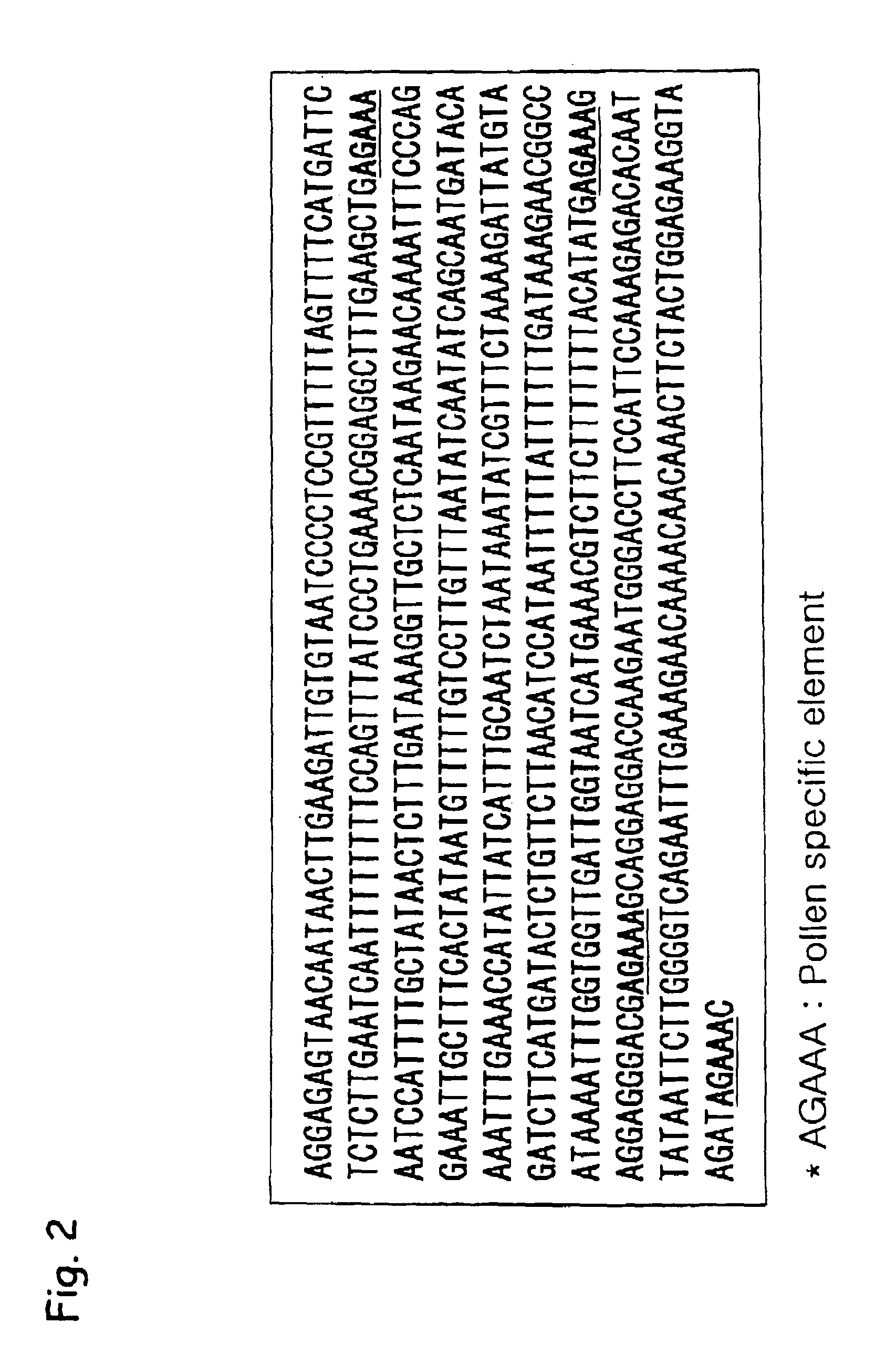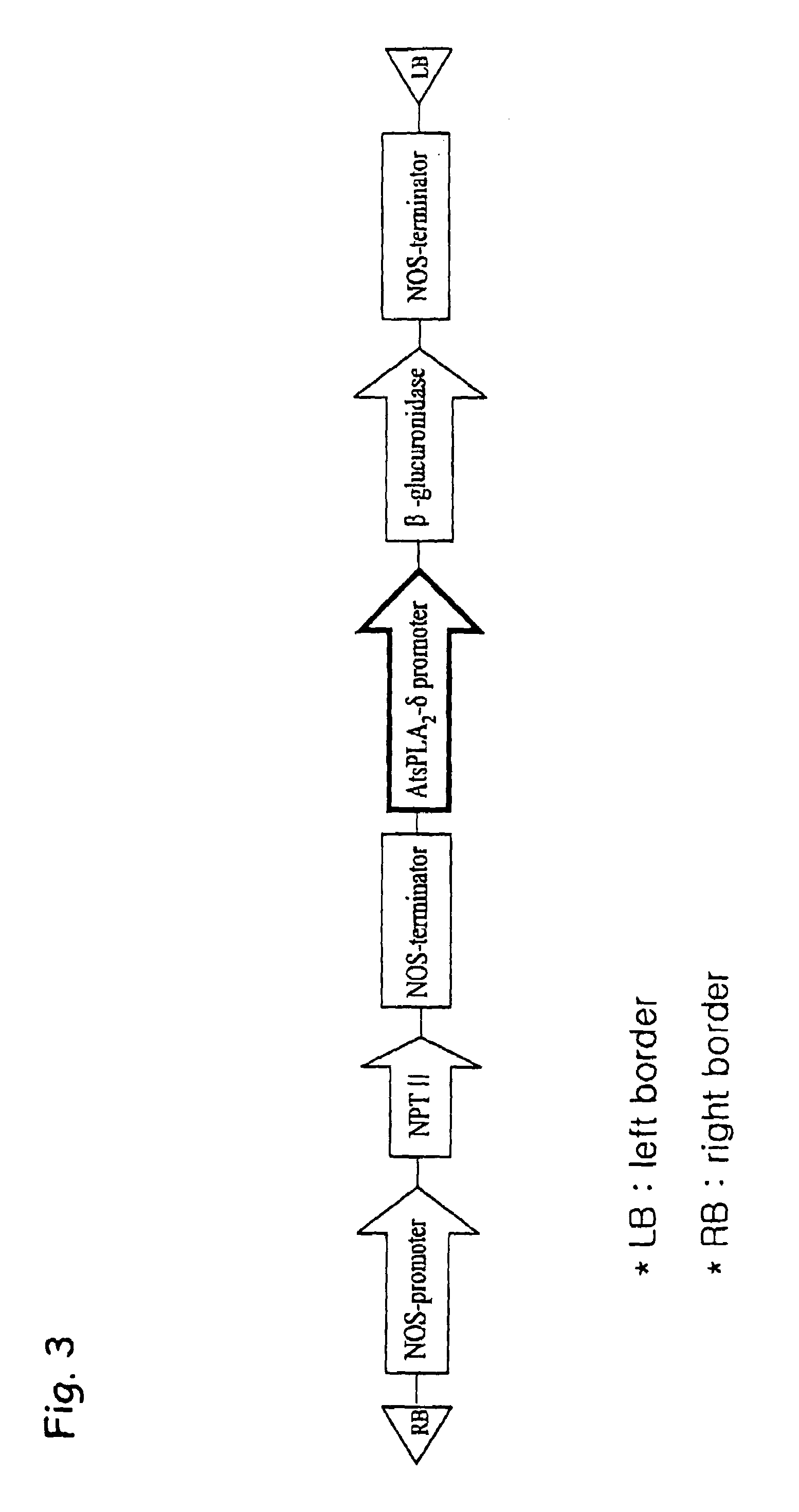Solely pollen-specific promoter
a promoter and promoter technology, applied in the field of solely pollen-specific promoters, can solve the problems of difficult to obtain pure hybrid seeds in large quantities, difficulty in obtaining pure hybrid seeds, so as to prevent foreign gene problems, regulate the time of trait expression, and suppress the development of pollen
- Summary
- Abstract
- Description
- Claims
- Application Information
AI Technical Summary
Benefits of technology
Problems solved by technology
Method used
Image
Examples
example 1
Discovery of Putative Phospholipase
[0033]The present inventors have cloned the putative secretory phospholipase A2 (sPLA2) of carnation and reported that result for the first time in a plant. The role of sPLA2 in plants is not well known and that study is in the early stages. It is assumed only that it plays an important role in flower tissue, since it is abundantly found in the flower tissue.
[0034]In order to find the gene of Arabidopsis which is the ortholog to the putative sPLA2 found in the carnation, the inventors compared and searched the sequence database of Arabidopsis disclosed in the site of TAIR (The Arabidopsis Information Resource). Such searches for sPLA2 homologs based on the previously published carnation sPLA2 cDNA sequence enabled the identification of sPLA2-δ (At4g29470) in Arabidopsis thaliana ‘Col-0’ genome. At4g29470 were found to be on chromosome #4.
example 2
Analysis of the Distribution of AtsPLA2-δ in Arabidopsis Tissues
[0035]In order to confirm that the ORF (Open Reading Frame) of the said putative sPLA2 gene was transcribed in Arabidopsis, RT-PCR was conducted.
[0036]Total RNA was extracted from Arabidopsis (Arabidopsis thaliana ecotype Columbia) mature flowers, cauline leaves, rosette leaves, inflorescences, and roots using a Nucleospin®RNA Plant kit (MACHEREY-NAGEL, Germany) in order to synthesize the standard cDNA for RT-PCR.
[0037]After 4 μg of total RNA was combined with each 10 mM of dNTP, 100 M random decamer and nuclease-free distilled water (D.W.) in the tube and stirred, it was allowed to react at 65° C. for 5 minutes. Then the tube was placed on ice. After RT-PCR buffer, RNase inhibitor and 0.1 M DTT were added to the tube, it was allowed to react at 42° C. for 2 minutes.
[0038]Again it was put on ice, and then was treated with 200 units of reverse transcriptase at 42° C. for 1 hour. This product was inactivated at 70° C. for...
example 3
Molecular Cloning of AtsPLA2-δ from Arabidopsis
[0043]Using two gene specific primers, QRT-δ-S and QRT-δ-A (Table 1), a partial cDNA encoding, At4g29470 (AtsPLA2-δ) was amplified from the total RNA of mature Arabidopsis flowers by RT-PCR using Superscrip™ II reverse transcriptase (Invitrogen) and Pyrobest® DNA polymerase (TaKaRa). Full-length cDNA corresponding to At4g29470 (AtsPLA2-δ) was amplified from the RACE (Rapid Amplification of cDNA Ends) cDNA pool of mature Arabidopsis flowers constructed by using a Marathon™ cDNA Amplification Kit (Clontech). The 5′-ends of the transcripts were identified using a modified cRACE as a primer extension method (Maruyama et al., 1995). The ORFs of AtsPLA2-δ were subcloned into EcoRV-cut pCR2.1-TOPO (Invitrogen) and transferred into XL1-Blue strain (Stratagene).
[0044]The cloned full-length cDNA sequence of At4g29470 was registered at the GenBank with accession number AY148347 and named as Arabidopsis secretory PLA2-delta (AtsPLA2-δ).
PUM
| Property | Measurement | Unit |
|---|---|---|
| temperature | aaaaa | aaaaa |
| temperature | aaaaa | aaaaa |
| temperature | aaaaa | aaaaa |
Abstract
Description
Claims
Application Information
 Login to View More
Login to View More - R&D
- Intellectual Property
- Life Sciences
- Materials
- Tech Scout
- Unparalleled Data Quality
- Higher Quality Content
- 60% Fewer Hallucinations
Browse by: Latest US Patents, China's latest patents, Technical Efficacy Thesaurus, Application Domain, Technology Topic, Popular Technical Reports.
© 2025 PatSnap. All rights reserved.Legal|Privacy policy|Modern Slavery Act Transparency Statement|Sitemap|About US| Contact US: help@patsnap.com



